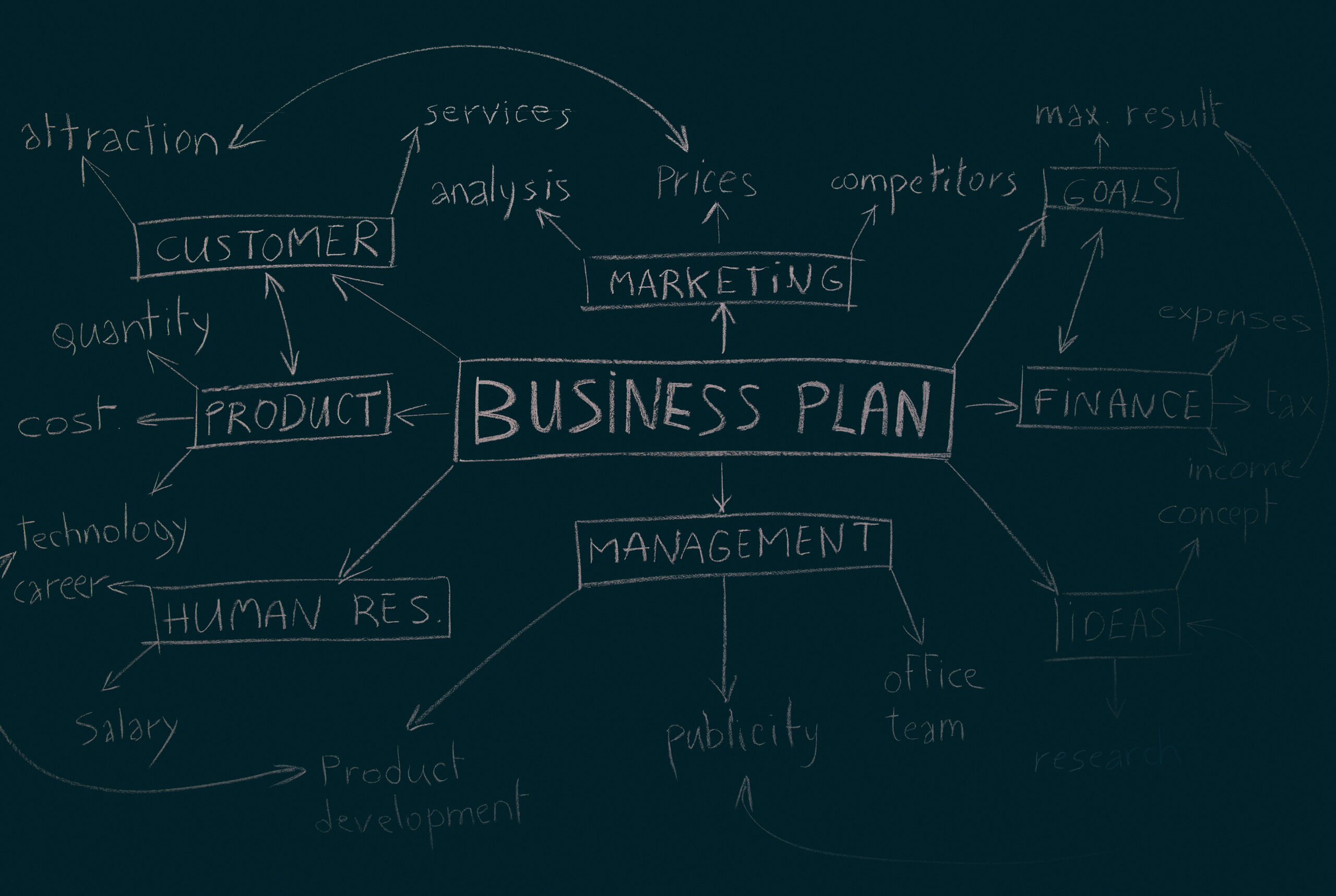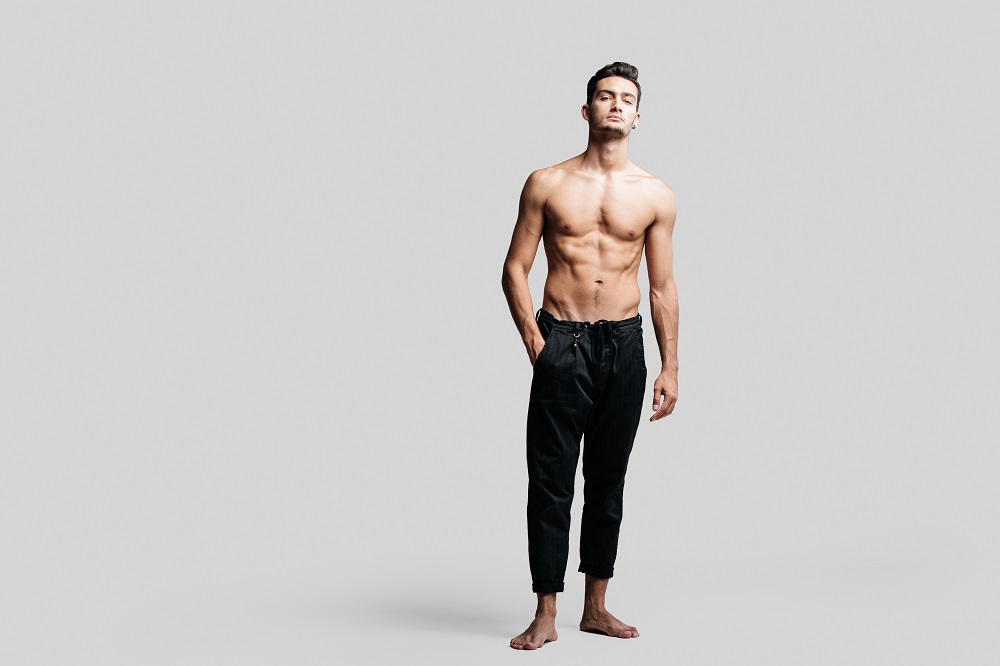Starting your clothing line can be a dream come true, but it takes a lot of hard work and planning to make it a reality. One of the most important things you need to do is create a solid clothing line business plan. This blog will help you map out your business goals, target market, financial projections, and more. In this blog post, we will walk you through the 10 simple steps to creating a successful clothing line business plan. So, let’s get started!
Why Create a Clothing Brand Business Plan?
Putting all elements of your fashion brand in writing beforehand will minimize unexpected challenges as you strive to establish a reputation for yourself and your business. Below are only some of the numerous benefits of creating a business plan for a clothing brand.
Establishes Your Company’s Core Values And Goals
Creating a business strategy can aid in developing uniform communication about the main goals and core principles of your clothing brand. Defining your company’s values and principles attracts investors and appeals to top managerial talent looking for a business they can truly support.
Once your apparel business plan takes shape, you will start to identify the distinct features of your clothing line that distinguish your company from competitors. Creating a thorough business plan for your clothing line will lead to distinct features that will help in developing a brand that both employees and customers are eager to endorse.
Provides A Solution Without Guesswork
Creating a business plan is beneficial because it covers numerous unknown factors and potential situations that could be missed without it. A well-developed business plan should function as a paper-based simulation, considering variables such as inventory loss, financial forecasts, operational costs, and investments in machinery.
Realizing that the working capital for launching your clothing brand is insufficient or that labor costs exceed expectations is a major setback. Organizing all information in an organized layout allows you to progress confidently, ensuring that you have considered all aspects of your company.
Attracts Investors To Your Clothing Line
Having a well-developed clothing business plan can be the key factor in securing funding from angel investors or a nearby bank. People or banks are more inclined to invest in your fashion brand if they have trust in your products, management, and goals.
In summary, a brief business plan can help you broaden your pool of potential funding sources for your new clothing line and might also enable you to secure more initial funding. If a company lacks a well-developed business plan, numerous investors may choose to invest in a different company that has clear goals and strategies in place.
Clearly Defines Success Criteria
Having a business plan for a clothing store will outline the goals you want to achieve in the short, medium, and long run. Writing down these goals gives a clear path for your clothing brand in the future, helping you and your employees stay focused. These objectives could involve reaching a specific number of email subscribers or meeting a revenue target shortly after starting a business.
Defining your goals in a business plan provides your clothing line with a clear goal to strive towards, and this clear sense of purpose will soon become a distinguishing characteristic of your brand. As your clothing brand achieves and exceeds the objectives outlined in the business plan, you can feel more assured to expand or explore new directions.
Provides A Financial Outlook For Your Clothing Line
One of the biggest advantages of creating apparel business plans is that it allows you to thoroughly examine the financial aspects before launching your business. Predicting cash flow, net income, and monthly expenditures can prevent numerous upcoming accounting issues and assist investors in evaluating your company’s profit potential.
When calculating income and fixed costs, you might come across bills, taxes, and unforeseen expenditures that were previously overlooked. Having a clear understanding of the financial expectations of starting a fashion brand can greatly minimize the risk of your clothing line facing liquidity problems in the future.
The Key Components Of A Business Plan
The majority of business plans follow a similar structure, regardless of the specific industry they belong to. Initially, creating a plan may appear overwhelming because of the numerous sections and subsections, but the core of your presentation should emphasize some key basics. These are the primary elements of a business plan that all entrepreneurs should be familiar with.
Executive Summary
The executive summary is the primary focus of every clothing company business plan. This section offers a concise summary of the information in your plan, allowing investors to quickly understand the fundamentals of your fashion brand. In an ideal situation, executive summaries should be short, simple to understand, and contained on just one page.
In this section, it is important to cover some key points such as a quick overview of your clothing line’s finances, a description of your product range, and forecasts for future expansion. This is a great spot to briefly bring up marketing tactics as well. Furthermore, you may wish to incorporate a brief discussion about the market potential for your fashion brand and your company’s strategies for staying ahead of the competition.
Management Structure
Being aware of the individuals responsible for your clothing brand can also significantly impact the overall attractiveness of your business proposal. This part needs to cover the key leaders of your clothing label, their industry background, and their role in the company’s overall achievements.
If you intend to have co-owners in the business, make sure to specify their ownership percentage and create a plan for how ownership will be handled if a partner departs. Make sure to mention the names and backgrounds of any specialists you collaborate with, like a dedicated accountant, lawyer, financial consultant, or part-time CFO.
Marketing Strategy
In your clothing store business plan, the marketing section should outline how you will attract your target audience and turn them into devoted customers. Share how you plan to utilize social media marketing, pay-per-click ads, and email marketing to drive traffic to your website or brick-and-mortar store. Remember to give an estimated yearly cost for funding your outreach plans.
Additional crucial information to include is the current fashion market trends and the strategies your company plans to utilize to rival competitors in the field. Make sure to highlight unique features of your products and services, like giving free shipping to new customers or offering discounts to email subscribers, that distinguish you from others in the industry.
Financial Summary
Another crucial aspect of a business plan for a clothing store is the financial forecast section, which delves into the specifics of the projected revenue and expenses for your clothing line. Additional details to address include the current working capital of your fashion brand and the required funding for equipment, personnel, fabrics, and other essential elements for your startup.
It’s important to have a balance sheet showing your anticipated financial status, including all income sources and expected costs. To guarantee accuracy, consider consulting with an accountant or financial expert to review the details in your summary.
The 10 Easy Yet Crucial Steps To Create A Clothing Line Business Plan

Developing a business plan for your clothing line is crucial for transforming your fashion ideas into a successful brand. This blueprint plan will lead you through the intricacies of the fashion industry, ensuring all aspects of your business are strategically aligned.
Here are 10 simple but essential steps to assist you in creating a business plan that not only establishes a solid base for your clothing line but also improves your partnership with B2B manufacturing partners.
Step 1: Define Your Brand Identity
Establishing your clothing line’s brand identity involves defining its mission, vision, and core values. This forms the basis of your brand, influencing all aspects from your creations to your interactions with customers. A powerful brand image sets you apart from rivals and fosters a dedicated customer following.
Begin by determining your target demographic – their characteristics, priorities, and how your brand can fulfill their requirements. Create your brand character by selecting the tone, style, and messaging that connects with your target audience. Lastly, determine your distinctive selling points (USPs) that differentiate your brand, like sustainability, creative designs, or top-notch quality.
Having a distinct brand identity aids in choosing the appropriate B2B manufacturing partner that resonates with your brand’s values. If your brand focuses on sustainability, it is important to collaborate with a manufacturer who also prioritizes this value and offers environmentally friendly production methods.
Step 2: Conduct Market Research
Market research is crucial to comprehend industry patterns, customer choices, and your competitors. It gives you information on what is successful in the market and where potential opportunities are, enabling you to make knowledgeable choices for your business.
Utilize techniques such as surveys, focus groups, and industry reports for collecting information. Perform competitor analysis to observe the actions of other brands and recognize market opportunities. This study will assist you in customizing your product offerings and marketing techniques to align with consumer needs for your business plan for clothing store.
Efficient market research allows you to convey your unique requirements to your B2B supplier, guaranteeing they can create products that appeal to your desired demographic. If you find an increasing need for athleisure wear in your research, you can collaborate with your manufacturer to create a product collection that aligns with this trend.
Step 3: Develop Your Product Line
Creating your product range entails crafting a selection that embodies your brand’s essence and addresses market demands. Ensuring that your designs align both with your brand’s overarching vision and stand out as original is crucial.
Concentrate on distinguishing your clothing line through unique features—what sets it apart? Select materials that reflect your brand’s beliefs, such as using organic cotton for an eco-friendly collection or advanced fabrics for athletic wear. Uphold design uniformity in your collection to strengthen your brand’s image.
A trustworthy B2B apparel producer is essential for transforming your designs into top-notch, expandable products. By teaming up with the appropriate manufacturer, you can guarantee that your designs are made to the highest quality, with the ability to expand as your brand expands.
Step 4: Create a Financial Plan
A financial plan details your budgeting, forecasting, and financial predictions. Understanding your costs, establishing achievable pricing, and guaranteeing profitability are essential. Having a strong financial strategy also ensures you can obtain financing and effectively handle money flow.
Begin by developing a comprehensive breakdown of costs that encompasses all aspects, such as materials, manufacturing, advertising, and shipping. Create a pricing plan that accounts for expenses but also stays competitive. Determine profit margins and predict revenue to guarantee sustainability in the long run.
Knowing production expenses and required amounts is crucial in collaborating with a business-to-business associate. By precisely figuring out these costs, you can improve the terms of negotiation and prevent financial risks, leading to a more seamless production.
Step 5: Choose the Right Manufacturing Partner
Choosing the correct B2B clothing producer is one of the most important choices for your clothing brand. An experienced manufacturer can turn your designs into reality and guarantee steady quality, making them an essential ally for your business.
Assess possible manufacturers by reviewing their quality standards, production capacity, lead times, and ethical practices. Request samples, verify references, and tour their facilities if feasible. Make sure they can fulfill the unique needs of your brand, including materials and sustainability.
Weft Apparel, for instance, provides personalized options for fashion brands, guaranteeing that your products are made according to your requirements. Collaborating with a reliable manufacturer can simplify your manufacturing process and assist you in realizing your brand’s goals.
Step 6: Develop a Marketing Strategy
Having a solid marketing plan as a part of your business plan for a clothing store is crucial for advertising your clothing brand and connecting with your desired customers. It includes all aspects ranging from branding and advertising to social media and partnerships with influencers.
Pay attention to digital marketing strategies like SEO, social media advertising, and email campaigns. Collaborate with influencers who connect with your desired demographic. Use public relations to acquire media attention and establish brand recognition.
Having a strong partnership with your manufacturer can enhance your marketing initiatives. For instance, sharing behind-the-scenes footage of how your manufacturer creates products can help establish transparency and trust with your customers, enriching your brand narrative.
Step 7: Plan Your Sales Channels
Deciding on your sales channels requires determining the methods and locations for selling your products, be it through online sales, traditional retail, or bulk selling. Every channel comes with its benefits and obstacles.
Assess the advantages and disadvantages of every sales platform. E-commerce provides a direct link to consumers, but effective online marketing is essential. Retail offers a tangible location but comes with increased expenses. Wholesale enables selling higher quantities at the cost of lower profits. Incorporate these channels into a unified sales plan.
Your company can assist various sales approaches through the provision of adaptable manufacturing options. If you require extensive manufacturing for stores or personalized orders for web shops, a suitable manufacturer will be able to adjust to your requirements.
Step 8: Establish a Production Timeline

Establishing an accurate production schedule is essential to guaranteeing timely product delivery. From conceptualization to shipping, each stage of the procedure must be meticulously organized and timed.
Develop a timeline that encompasses finalizing design, acquiring materials, production, and quality control checks. Take into consideration the time it takes for tasks to be completed and the possibility of delays by incorporating extra time into your schedule. Make sure to have a backup plan ready for unforeseen circumstances.
It is crucial to align your timeline with your manufacturer’s production schedule. Consistent communication and coordination with your B2B partner will guarantee your products are prepared for market releases on time.
Step 9: Set Up Quality Control Processes
Ensuring quality control is essential for upholding the top-notch standards of your clothing brand. Rigorous testing and monitoring are necessary to maintain consistency and satisfy customer expectations.
Integrate quality control inspections throughout all phases of production. Establish protocols for testing materials, construction, and final products. Establish feedback loops with your custom clothing manufacturer to promptly deal with any quality concerns.
A partnership with a manufacturer focused on quality control in a B2B setting can help make this process more efficient. By collaborating closely with your manufacturer, you can guarantee that all products meet your expectations, minimizing returns and boosting customer happiness.
Step 10: Monitor and Adjust Your Plan
Your business plan is a dynamic document that must change as your clothing line expands. Frequently reviewing and modifying your plan assists in staying on course and responding to market changes.
Monitor important indicators like sales figures, customer reviews, and operational productivity. Utilize this information to make well-informed changes to your business plan, whether that involves fine-tuning your product offerings, revising your marketing approach, or negotiating with your supplier.
Keeping a line of communication open with your manufacturer is crucial for making adjustments go smoothly. A solid B2B connection enables flexibility in manufacturing and ensures that any plan alterations are implemented efficiently, reducing disruptions to your business.
How Much Does It Cost to Start a Clothing Line?
The cost of starting a clothing line varies based on production, location, and business scale. A small clothing line typically requires an initial investment of $1,000 to $2,000, covering basic materials and organic promotion, while a medium-sized brand may need $2,000 to $5,000, allowing for a larger collection and paid marketing.
For a large clothing line, the investment ranges from $25,000 to $50,000, with significant resources allocated to production, launch, and marketing. Location impacts costs, with regions like Africa offering lower production expenses. Regardless of the scale, careful budget management and innovative use of resources are essential for success in the competitive fashion industry.
Is Clothing Line A Profitable Business?
A clothing brand has the potential to make money, but its success is influenced by factors such as market demand, brand uniqueness, quality, pricing approach, and successful marketing. Despite the competitiveness of the fashion industry, having a defined brand identity, knowing your target audience, and efficiently handling production costs can lead to profitable opportunities. Working with trustworthy producers and remaining flexible to changing trends can enhance profits as well. Nevertheless, having a carefully crafted business strategy and being ready for the obstacles in the sector is essential.
What Is The Most Profitable Clothing Line?
Start by selling custom t-shirts if you’re unsure of what to offer for sale. T-shirts are among the most preferred clothing items globally. A t-shirt has the potential to showcase a brand or personal interests and identity with the appropriate custom design. Usually, a fashion startup starts by launching a few t-shirt designs and later moves on to also offering hoodies and more.
Using the POD model makes it simple to expand your product range and offer a variety of items like clothing, shoes, hats, and swimwear for sale. All that is needed is a fantastic design concept and a well-executed marketing strategy.
In recent years, athleisure wear such as leggings and personalized hoodies have become extremely popular in fashion. Grand View Research projects that the athleisure market will achieve a value of $662.56 billion by the year 2030. Hence, it is a fashion worth looking into when planning your clothing collection.
Drafting A Business Plan For A Clothing Line: Mistakes To Avoid!

Condensing your fashion label into a presentation format can be challenging, and you may face some obstacles in the process. Having said that, a lot of the problems individuals face can be easily prevented if you are aware of what to watch out for. Listed below are some typical errors entrepreneurs often commit when drafting a business plan for a clothing line.
Estimating Growth And Income Too High
Avoid the urge to make overly optimistic predictions about the success of your clothing line in the market. While it might appear beneficial to propose ambitious plans to investors, committing to excessive promises in a short period can overwhelm your company with the pressure to deliver.
Instead of setting high projections, lower them to a more realistic level and just try to surpass them. Banks and private investors are knowledgeable about the operations of small businesses, therefore there is no pressure to show high figures immediately. Individuals who are knowledgeable in funding fashion brands probably do not anticipate significant immediate profits.
Excessive Detail-Orientedness
While it’s important to steer clear of an unclear business plan, it’s equally crucial to not get overly immersed in minor specifics. If you’re not cautious, you might wind up with a document similar in size to an encyclopedia rather than a clothing line business plan. When writing, be brief to avoid overwhelming readers with unnecessary information.
Creating A Business Plan With All Positives And No Drawbacks
A dishonest clothing line business plan resembles more of a sales pitch than a professional strategy for developing a fashion brand. Do not hesitate to discuss the possible negative aspects of your business, the difficulties that similar businesses may encounter, and the potential impact of these challenges on your profits.
Only a small number of investors will reject a business proposal due to the presence of risk or uncertainty. Many readers will truly value the precision of the information provided, increasing the odds of them giving your business plan serious consideration.
Ready to Take the Next Step?
Developing an effective business plan for your clothing line is crucial in transforming your fashion aspirations into reality. By adhering to these 10 basic steps, you can establish a solid base for your brand, starting from defining your identity and conducting market research to creating your product line and selecting the appropriate manufacturing partner. A carefully planned strategy will steer your choices, draw in investors, and keep you focused as your business expands. Be sure to remain adaptable, adjust to market shifts, and consistently improve your strategy. By dedicating time and careful planning, your clothing brand can succeed in the competitive fashion market. Additionally, choose Weft Apparel as your custom clothing manufacturer to make your clothing business dream a reality.




